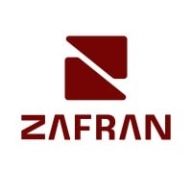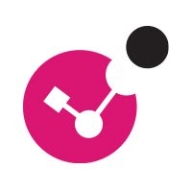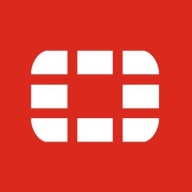


![Threat Stack Cloud Security Platform [EOL] Logo](https://images.peerspot.com/image/upload/c_scale,dpr_3.0,f_auto,q_100,w_64/o0no0it6ybl6satjcxomcblsgmd6.png)
Find out what your peers are saying about Tenable, Qualys, Wiz and others in Vulnerability Management.



| Company Size | Count |
|---|---|
| Small Business | 54 |
| Midsize Enterprise | 17 |
| Large Enterprise | 57 |
| Company Size | Count |
|---|---|
| Small Business | 42 |
| Midsize Enterprise | 13 |
| Large Enterprise | 23 |
| Company Size | Count |
|---|---|
| Small Business | 2 |
| Midsize Enterprise | 5 |
| Large Enterprise | 2 |
Zafran Security integrates with existing security tools to identify and mitigate vulnerabilities effectively, proving that most critical vulnerabilities are not exploitable, optimizing threat management.
Zafran Security introduces an innovative operating model for managing security threats and vulnerabilities. By leveraging the threat exposure management platform, it pinpoints and prioritizes exploitable vulnerabilities, reducing risk through immediate remediation. This platform enhances your hybrid cloud security by normalizing vulnerability signals and integrating specific IT context data, such as CVE runtime presence and internet asset reachability, into its analysis. No longer reliant on patch windows, Zafran Security allows you to manage risks actively.
What are the key features of Zafran Security?
What benefits can users expect from Zafran Security?
In industries where security is paramount, such as finance and healthcare, Zafran Security provides invaluable protection by ensuring that only exploitable vulnerabilities are addressed. It allows entities to maintain robust security measures while allocating resources efficiently, fitting seamlessly into existing security strategies.
Check Point CloudGuard CNAPP offers comprehensive cloud security with features like dynamic access control, asset protection, and compliance checks, tailored for organizations seeking enhanced governance across AWS, Azure, and GCP platforms.
Check Point CloudGuard CNAPP provides robust capabilities, including centralized firewall management, IAM scanning, and real-time visibility. Its strengths lie in predictive visualization, threat intelligence, and auto-remediation, making it a valuable tool for risk mitigation and compliance management. The platform's integration and responsiveness enhance cloud security, ensuring alignment with industry standards and effective threat protection.
What are the key features of Check Point CloudGuard CNAPP?Organizations in finance, healthcare, and retail frequently implement Check Point CloudGuard CNAPP for compliance and security across cloud environments. It assists with workload protection, threat detection, and regulatory obligation fulfillment, proving effective for securing applications and monitoring API interactions.
Fortinet FortiOS is a comprehensive security operating system that powers Fortinet's network security solutions. It provides advanced threat protection, network visibility, and centralized management for organizations of all sizes. With its robust features and intuitive interface, FortiOS enables businesses to secure their networks, applications, and data from cyber threats.
One of the key features of FortiOS is its advanced threat protection capabilities. It incorporates multiple security technologies, including firewall, antivirus, intrusion prevention system (IPS), and web filtering, to detect and block a wide range of threats. This ensures that organizations are protected against malware, ransomware, and other malicious activities. FortiOS also offers extensive network visibility, allowing organizations to monitor and analyze network traffic in real-time. This visibility enables businesses to identify potential security risks, detect anomalies, and take proactive measures to mitigate threats.
Additionally, FortiOS provides detailed reports and analytics, helping organizations gain insights into their network security posture. Centralized management is another crucial aspect of FortiOS. It allows businesses to manage and configure their security policies, devices, and users from a single console. This simplifies the management process and ensures consistent security across the entire network infrastructure.
Moreover, FortiOS supports integration with other Fortinet products, enabling seamless security orchestration and automation. FortiOS is designed to be scalable and flexible, making it suitable for organizations of all sizes. It offers a range of deployment options, including physical appliances, virtual machines, and cloud-based solutions. This flexibility allows businesses to choose the deployment model that best fits their requirements and easily scale their security infrastructure as their needs evolve.
Threat Stack Cloud Security Platform [EOL] offers robust security features including endpoint monitoring, rule customization, and integration capabilities, with easy connectivity to cloud services like Docker and AWS.
Threat Stack Cloud Security Platform [EOL] provides tools for enhancing security visibility across cloud infrastructure. It supports AWS and Docker integration, facilitating efficient threat detection and management. Users appreciate its capability to configure customizable alerts and monitor endpoints, sessions, API interactions, and cloud services. However, there are areas needing improvement, such as better serverless environment support and reduced alert frequency. The platform services smaller organizations by compensating for limited security resources with its comprehensive monitoring and auditing tools.
What are the key features?In specific industries, Threat Stack Cloud Security Platform [EOL] is utilized for its strength in monitoring cloud infrastructure and preventing unauthorized access. Organizations in fields where cloud operations are critical use it for regular audits and monitoring. Its capabilities in threat management are leveraged to maintain secure operations and compliance, especially where there is no dedicated security team.